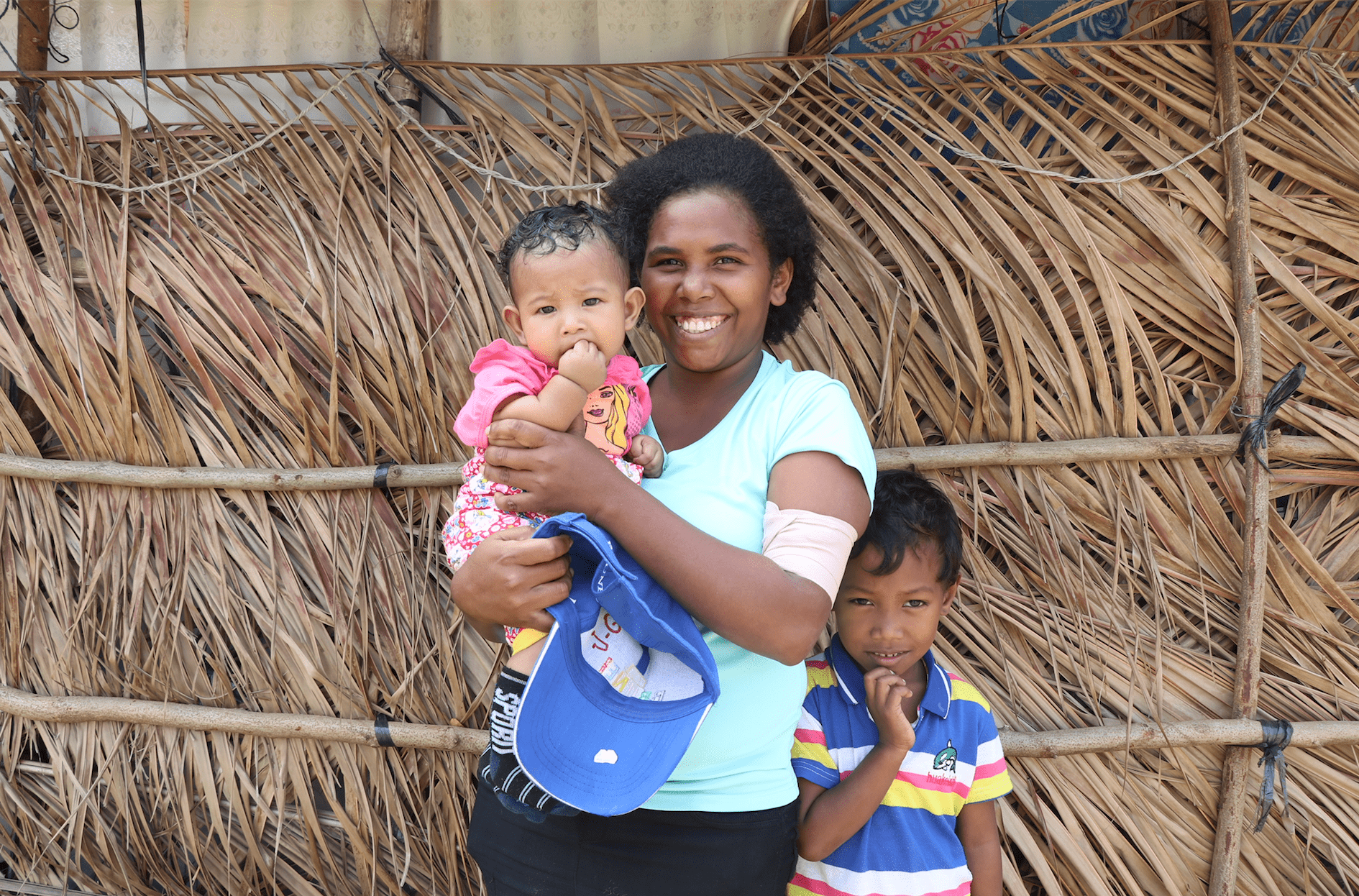ISABELA, Philippines – Gathering in a light green painted basketball court, surrounded by coconut and banana trees, 24-year-old Joan Calamayan and 50 other young women wanted to learn about family planning and the services available in the Philippine village of Kalabaza.
“Today we are going to talk about how to plan the timing and size of your families,” said reproductive health facilitator Benjamin Lucas. He is part of a UNFPA-supported project, launched in August 2017, to provide women access to an expanded number of contraceptive choices.
Around him, the young women and their families, many of whom had walked from far-flung villages, listened intently as he discussed different types of contraceptives.
“I have three children. An 8-year-old, a 5-year-old and a one-year-old,” said Ms. Calamayan. “I do not want to get pregnant anymore.”
She is not alone. In the Philippines, 49 per cent of unmarried, sexually active women, and 17 per cent of married women have an unmet need for family planning, according to the 2017 National Demographic and Health Survey.
In June 2015, the Philippine Supreme Court issued a temporary restraining order that prevented the Department of Health from procuring, distributing and administering contraceptive implants. While the restraining order was lifted in November 2017, the popularity of contraceptive implants, particularly among women from poor communities, has kept demand high.
“We are working to ensure that every woman has the right to choose a family planning method that would suit her need so that no one is left behind,” said UNFPA Philippines Country Representative Klaus Beck.
Nobody left behind
In partnership with the Philippine Society for Responsible Parenthood (PSRP) and with support from Family Planning 2020 (FP2020), the programme aims to provide 40,000 women with access to contraceptive implants in 14 areas including far-flung communities with indigenous people.
“I am very happy this family planning activity is happening in our community of Ugad,” said village captain Estelita Guiuo. The 63-year-old is from the Ibanag indigenous people who reside in the northern Philippine provinces of Isabela, Cagayan and Nueva Vizcaya.
She smiles as she surveys the other Ibanag women looking to access contraceptive implants. “While some women want to get pregnant others might not. This is why it is very important that women have that choice,” she told UNFPA.
Interviews in project sites have also revealed that many women view family planning as a path away from poverty. They do not want to be left behind, caught in a cycle of poverty. “Life is hard,” said 23-year-old Hannah Gumaro who voluntarily underwent implant insertion. The mother of two and her husband, a construction worker, considered the financial implications of another child.
“My sister-in-law told me about this family planning project and it’s very helpful. I do not want to get pregnant right now because we already have two children who we have to support,” said Ms. Gumaro.
Ms. Calamayan who also underwent implant insertion had similar motivations. “Life can be challenging, and children are the ones who suffer when there is no food to eat. My husband and I, we already have three children who we need to educate,” she told UNFPA.
Human right
Millions of other Filipino women would benefit from access to voluntary family planning, which is one of the most effective ways to stop the cycle of poverty for families and communities in many developing countries.
On 13 May 2018, the world will witness the 50th anniversary of the proclamation that declared access to family planning as a basic human right. The proclamation was made during the International Conference on Human Rights and remains a reminder of the progress still needed to ending the unmet need for family planning.
“I hope more women have access to modern family planning,” said Ms. Calamayan after her implant insertion. “I’m very happy I had the opportunity.”
- Mario Villamor


